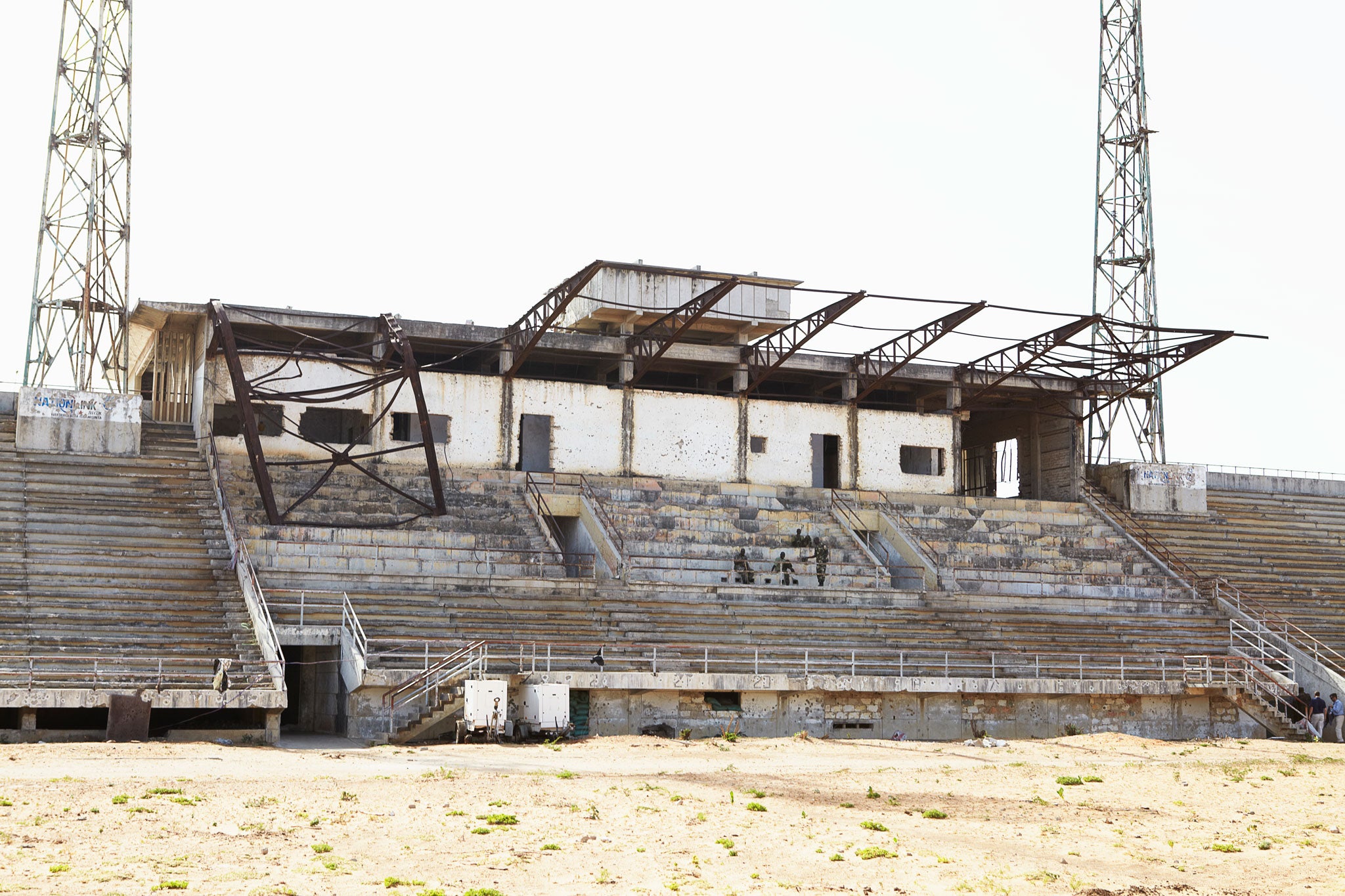The killing field: Extraordinary images of Al-Shabaab's Somali stadium of death
A sports stadium in Mogadishu became a key base for al-Shabaab in Somalia as their influence expanded across eastern Africa. Photographer Johnnie Shand Kydd visited the arena after it was reclaimed by African Union forces

Your support helps us to tell the story
From reproductive rights to climate change to Big Tech, The Independent is on the ground when the story is developing. Whether it's investigating the financials of Elon Musk's pro-Trump PAC or producing our latest documentary, 'The A Word', which shines a light on the American women fighting for reproductive rights, we know how important it is to parse out the facts from the messaging.
At such a critical moment in US history, we need reporters on the ground. Your donation allows us to keep sending journalists to speak to both sides of the story.
The Independent is trusted by Americans across the entire political spectrum. And unlike many other quality news outlets, we choose not to lock Americans out of our reporting and analysis with paywalls. We believe quality journalism should be available to everyone, paid for by those who can afford it.
Your support makes all the difference.The gunmen were determined to drain every last drop of blood for the land they were being forced to cede in the heart of Somalia's capital, Mogadishu.
There had already been months of fighting in the surrounding streets as African Union (AU) troops, deployed to bring peace to this most blighted of cities, advanced street by street.
Gunfights at the time had raged for days across narrow alleyways. On one side were soldiers from the Ugandan army, sent as the main component of the AU force. On the other, followers of al-Shabaab, the extremist al-Qa'ida-linked body that had sought to enforce its hard-line interpretation of Islamic law on the city.
One of their final bastions was Mogadishu stadium, once the centre for Somalia's national football team. Even when all the surrounding streets in the district had been cleared, the militiamen holed up there refused to surrender – requiring the soldiers to clear it one corridor and one stand at a time.
The devastation this battle caused can be seen in every bullet hole that peppers the structure. At its entrance way, gaping holes mark where shells had struck.
Even after the stadium was cleared, there had been one last shocking surprise. As African Union troops celebrated their victory and wandered inside, there was a gunshot and a soldier fell, shot between the eyes. An al-Shabaab fighter had hidden in a ventilation shaft to secure one last victim.
Many people only know of al-Shabaab as the Islamist group behind the massacre last year at the Westgate shopping mall in Nairobi. But long before that it had been wreaking havoc in Somalia where, until Africa Union troops arrived in 2010, the group had secured control of not only the capital but vast stretches of the country.
To achieve this control, and to continue operating now, it needs money. One of the most lucrative ways it does so is through poaching ivory, so that it can then be sold on to consumers in Asia, in most cases China, where each kilo can command up to $65,000 (£39,600).
It is why the Elephant Action League has dubbed ivory "the white gold of jihad", and why it has warned that up to 40 per cent of Al-Shabaab's army is funded through the illicit trade.
On the other side of the border, in Kenya, wildlife rangers are, as a result, engaged in their own fight with Al-Shabaab, one that at times can appear to be as hazardous to life as the battle for Mogadishu.
Units, many supported by The Independent's Elephant Appeal beneficiary Space for Giants and its partners, patrol the country's northern regions to try to protect Kenya's remaining elephants.
All understand the reality of the fight they are engaged in. "It is a war," one commander said. And it's a war in which not only animals, but people, are at risk of dying.
Join our commenting forum
Join thought-provoking conversations, follow other Independent readers and see their replies
Comments